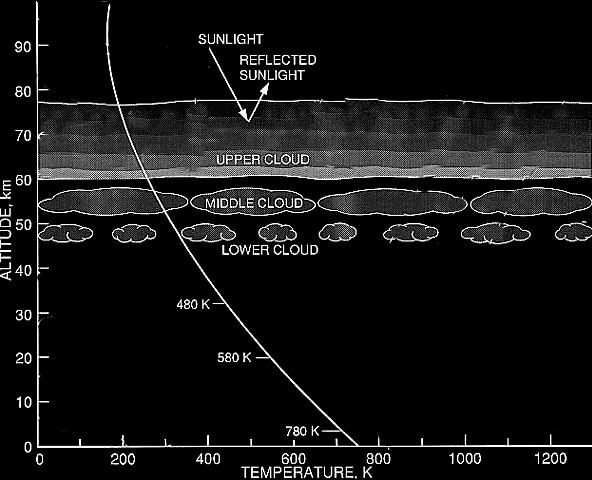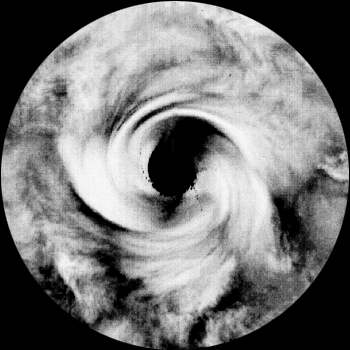|
The thick atmosphere of Venus is primarily carbon dioxide, with smaller amounts of nitrogen, sulphur dioxide, water vapor and other gases. At high altitudes, sunlight converts CO2, SO2 and H2O into sulphuric acid and carbon monoxide, thus creating a cloud of acid droplets.

Russian and American probes into the atmosphere have revealed three cloud layers. The sulphuric acid mist is not very dense, one could see for a mile or so, but at 20 miles thick even the lower layer is completely obscured from view. The cloud deck ends where heat boils and decomposes the suphuric acid. This is 30 miles above the surface, and even at that altitude the pressure is slightly higher than Earth sea level. |

